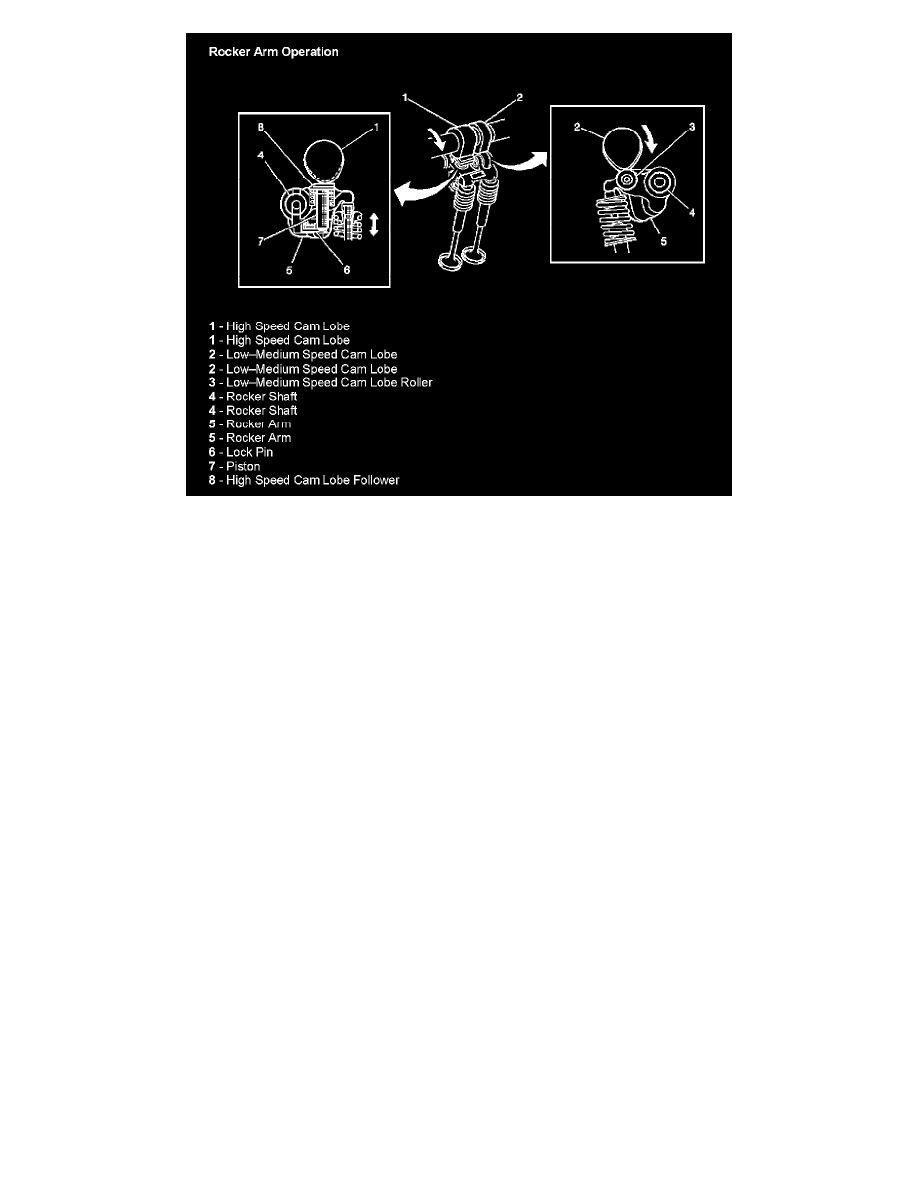Vibe FWD L4-1.8L VIN L (2005)

Rocker Arm Operation
Each rocker arm opens and closes both intake or exhaust valves simultaneously. The rocker arms also follow both the low/medium speed camshaft
lobes (2) and high speed camshaft lobes (1) at all times. The low/medium speed cam lobe (2) rides on a hardened steel roller (3). The high speed cam
lobe (1) rides on a steel pad follower (8). The steel pad (8) sits on top of a piston (7) that is normally supported by a spring and is free to move up and
down against the cam lobe (1). Because the follower piston spring is weaker than the valve springs, the cam follower (8) moves away from the cam
lobe (1) instead of the rocker arm (5). Therefore, with no oil pressure applied to the rocker arm, the low/medium speed cam lobe (2) opens and closes
the valves.
When the rocker arm oil control solenoid turns ON, oil flows from the rocker arm shaft into an oil passage in the rocker arm. The oil passage leads to
a spring loaded lock pin (6) that is normally resting beyond the travel of the piston (7). With the solenoid ON, oil flow creates pressure within the
rocker arm oil passage and moves the lock pin (6) underneath the piston (7). The piston and cam follower (8) can no longer move away from the cam
lobe (1) and the rocker arm now moves with the high lift cam lobe (1).
Low-Medium Speed Cam Operation
